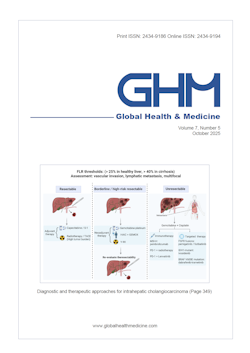Global Health & Medicine 2025;7(3):211-225.
Reversal of global health inequality in pancreatitis burden from 1990 to 2021: A cross-national GBD 2021 analysis with forecast to 2030
Fu L, Liu S, Yang Y, Xu Z, Liu X, Pan M, Yang C, Lin J, Huang X
Pancreatitis is a rapidly expanding global non-communicable disease, marked by substantial disparities across populations. However, comprehensive long-term assessments of global health inequalities remain scarce. This study examined inequality in the pancreatitis burden from 1990 to 2021, identified principal determinants, and forecasted future trends across countries with varying Socio-demographic Index (SDI) levels. Using data from the Global Burden of Disease 2021, we assessed inequalities in the prevalence, incidence, and disability-adjusted life years of pancreatitis via the Slope Index of Inequality (SII) and Concentration Index (CI). Decomposition analysis was used to identify drivers of change, and a Bayesian age-period-cohort model projected trends to 2030. Between 1990 and 2019, the SII decreased from 13.83 to 8.61, signaling a reduction in absolute health inequality. Nevertheless, beginning in 2020, the SII turned negative, reaching –10.79 in 2021, indicating a structural reversal in disease burden distribution from high- to low-SDI countries. Concurrently, the CI declined from –0.04 to –0.10, suggesting worsening relative inequality. Decomposition revealed population growth and aging as primary drivers of the rising burden, while epidemiological improvements contributed minimally, particularly in low-SDI regions. Projections suggest that while global age-standardized rates may continue to decrease through 2030, the proportional burden in low-SDI countries is expected to rise steadily. The global socioeconomic distribution of pancreatitis burden is experiencing a profound shift, with inequalities increasingly concentrated in low-SDI areas. Driven by demographic trends, this shift underscores the necessity for targeted global strategies to mitigate disparities and bolster health system resilience.
DOI: 10.35772/ghm.2025.01042







